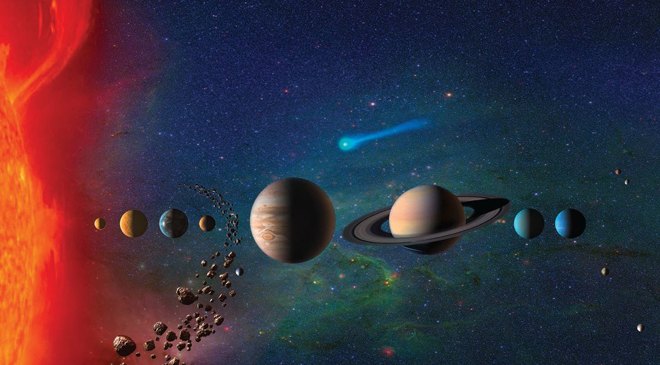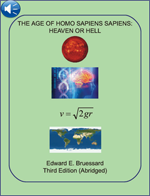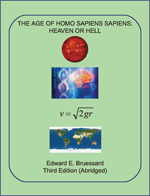Miracle of Life
When viewed from the perspective of cosmic eternity, the miracle of life on Earth becomes all the more precious. Magnificent planet Earth becomes all the more divine.
Behold majestic planet Earth. Treasure life on Earth.
The Local Galactic Neighborhood
The Solar System is the local galactic neighborhood where humans reside. Through space exploration, humans have begun sizing up their small corner of space—and beyond.

| SOLAR SYSTEM |
0Sun |
1Mercury |
2Venus |
3Earth |
4Mars |
5Jupiter |
6Saturn |
7Uranus |
8Neptune |
9Pluto |
|---|---|---|---|---|---|---|---|---|---|---|
| Photo |  |
 |
 |
 |
 |
 |
 |
 |
 |
 |
| Symbol | ☼ | ☿ | ♀ | ♁ | ♂ | ♃ | ♄ | ♅ | ♆ | ♇ |
| Link | Link | Link | Link | Link | Link | Link | Link | Link | Link | Link |










Table Credit: NASA
| Description | Sun | Mercury | Venus | Earth | Mars | Jupiter | Saturn | Uranus | Neptune | Pluto |
|---|---|---|---|---|---|---|---|---|---|---|
| Mean Distance from Sun 1 (Metric kilometers) | Not Applicable | 57,909,227 km | 108,209,475 km | 149,598,262 km | 227,943,824 km | 778,340,821 km | 1,426,666,422 km | 2,870,658,186 km | 4,498,396,441 km | 5,906,440,628 km |
| Mean Distance from Sun 2 (English miles) | Not Applicable | 35,983,125 miles | 67,238,251 miles | 92,956,050 miles | 141,637,725 miles | 483,638,564 miles | 886,489,415 miles | 1,783,744,300 miles | 2,795,173,960 miles | 3,670,092,055 miles |
| Mean Distance from Sun 3 (Astronomical Units) | Not Applicable | 0.38709927 A.U. | 0.7233357 | 1.000 A.U. | 1.523662 A.U. | 5.2028870 A.U. | 9.53667594 A.U. | 19.189165 A.U. | 30.069923 A.U. | 39.482117 A.U. |
| Mean Orbit Velocity 1 (Metric kilometers per hour) | Not Applicable | 170,503 km/h | 126,074 km/h | 107,218 km/h | 86,677 km/h | 47,002 km/h | 34,701 km/h | 24,477 km/h | 19,566 km/h | 16,809 km/h |
| Mean Orbit Velocity 2 (English miles per hour) | Not Applicable | 105,946 mph | 78,339 mph | 66,622 mph | 53,858 mph | 29,205 mph | 21,562 mph | 15,209 mph | 12,158 mph | 10,444 mph |
| Mean Orbit Velocity Note | Not Applicable | 1.590 x Earth | 1.176 x Earth | Not Applicable | 0.808 x Earth | 0.438 x Earth | 0.324 x Earth | 0.228 x Earth | 0.182 x Earth | 0.157 x Earth |
| Equatorial Circumference 1 (Metric kilometers) | 4,370,005.6 km | 15,329.1 km | 38,024.6 km | 40,030.2 km | 21,296.9 km | 439,263.8 km | 365,882.4 km | 159,354.1 km | 154,704.6 km | 7,231.9 km |
| Equatorial Circumference 2 (English miles) | 2,715,395.6 miles | 9,525.1 miles | 23,627.4 miles | 24,873.6 miles | 13,233.3 miles | 272,945.9 miles | 227,348.8 miles | 99,018.1 miles | 96,129.0 miles | 4,493.7 miles |
| Surface Area 1 (Metric square kilometers) | 109.2 x that of Earth | 0.3829x Earth's | 0.9499 x Earth's | Not Applicable | 0.532 x Earth | 10.9733 x Earth | 9.1402 x Earth | 3.9809 x Earth | 3.8647 x Earth | 0.1807 x Earth |
| Surface Area 2 (English square miles) | 2,347,017,636,988 square miles | 28,879,000 square miles | 177,697,463 square miles | 196,936,994 square miles | 55,742,106 square miles | 23,713,907,537 square miles | 16,452,636,641 square miles | 3,120,894,516 square miles | 2,941,431,558 square miles | 6,427,806 square miles |
| Surface Area Note | 11,917.607 Earths | 0.147 x Earth | 0.902 x Earth | Not Applicable | 0.283 x Earth | 120.414 x Earth | 83.543 x Earth | 15.847 x Earth | 14.980 x Earth | 0.033 x Earth |
| Surface Gravity 1 (Metric square meters per second) | 274.0 m/s² | 3.7 m/s² | 8.87 m/s² | 9.80665 m/s² | 3.71 m/s² | 24.79 m/s² | 10.4 m/s² | 8.87 m/s² | 11.15 m/s² | 0.66 m/s² |
| Surface Gravity 2 (English square feet per second) | 899.0 ft/s² | 12.1 ft/s² | 29.1 ft/s² | 32.041 ft/s² | 12.2 ft/s² | 81.3 ft/s² | 34.3 ft/s² | 29.1 ft/s² | 36.6 ft/s² | 2.2 ft/s² |
| Surface Gravity Note | 27.96 x Earth's surface gravity | 100 pounds on Earth = 38 pounds on Mercury | 100 pounds on Earth = 91 pounds on Venus | Not Applicable | 100 pounds on Earth = 38 pounds on Mars | 100 pounds on Earth = 253 pounds on Jupiter. | 100 pounds on Earth = 107 pounds on Saturn | 100 pounds on Earth = 91 pounds on Uranus | 100 pounds on Earth = 114 pounds on Neptune | 100 pounds on Earth = 7 pounds on Pluto |
| Escape Velocity 1 (Metric kilometers per hour) | 2,223,720 km/h | 15,300 km/h | 37,296 km/h | 40,284 km/h | 18,108 km/h | 216,720 km/h | 129,924 km/h | 76,968 km/h | 84,816 km/h | 4,428 km/h |
| Escape Velocity 2 (English miles per hour) | 1,381,756 mph | 9,507 mph | 23,175 mph | 25,031 mph | 11,252 mph | 134,664 mph | 80,731 mph | 47,826 mph | 52,702 mph | 2,751 mph |
| Sidereal Rotation Period 1 (days) | 25.38 Earth Days | 58.646 Earth Days | -243.018 Earth Days | 0.99726968 Earth Days | 1.026 Earth Days | 0.41354 Earth Days | 0.444 Earth Days | -0.718 Earth Days | 0.671 Earth Days | -6.387 Earth Days |
| Sidereal Rotation Period 2 (hours) | 609.12 Hours | 1407.5 Hours | -5832.4 Hours | 23.934 Hours | 24.623 Hours | 9.92496 Hours | 10.656 Hours | -17.23992 Hours | 16.11000 Hours | -153.29280 Hours |
| Surface Temperature 1 (Metric Celsius) | 5,500 °C | -173/427 °C | 462 °C | -88/58 (min/max) °C | -153 to +20 °C | -148 °C | -178 °C | -216 °C | -214 °C | -233/-223 °C |
| Surface Temperature 2 (English Fahrenheit) | 10,000 °F | -279/801 °F | 864 °F | -126/136 (min/max) °F | -225 to +70 °F | -234 °F | -288 °F | -357 °F | -353 °F | -387/-369 °F |
| Description | Sun | Mercury | Venus | Earth | Mars | Jupiter | Saturn | Uranus | Neptune | Pluto |
Table Credit: NASA
Scroll to Top of Page
Enter the Human Factor
What about Earth's human caretakers? How are they going to act? How are they going to conduct themselves? Will they ever get their collective acts together and proceed to transform Earth into some form of Heaven for the living to enjoy each day? I think that they will.
The paradox of humankind is this: It is an infinitely intelligent species. In a very short span of time, the human species has amassed and impressive stock of knowledge and wisdom. The human species has excelled in its dominion over the natural world. The human species has emerged as the pre-eminent life form on Earth. Yet, if it is the fate of the human species to go extinct on some future date, then its high intelligence just might be the trigger to a chain of events that ultimately would lead to its demise.
Scroll to Top of Page






